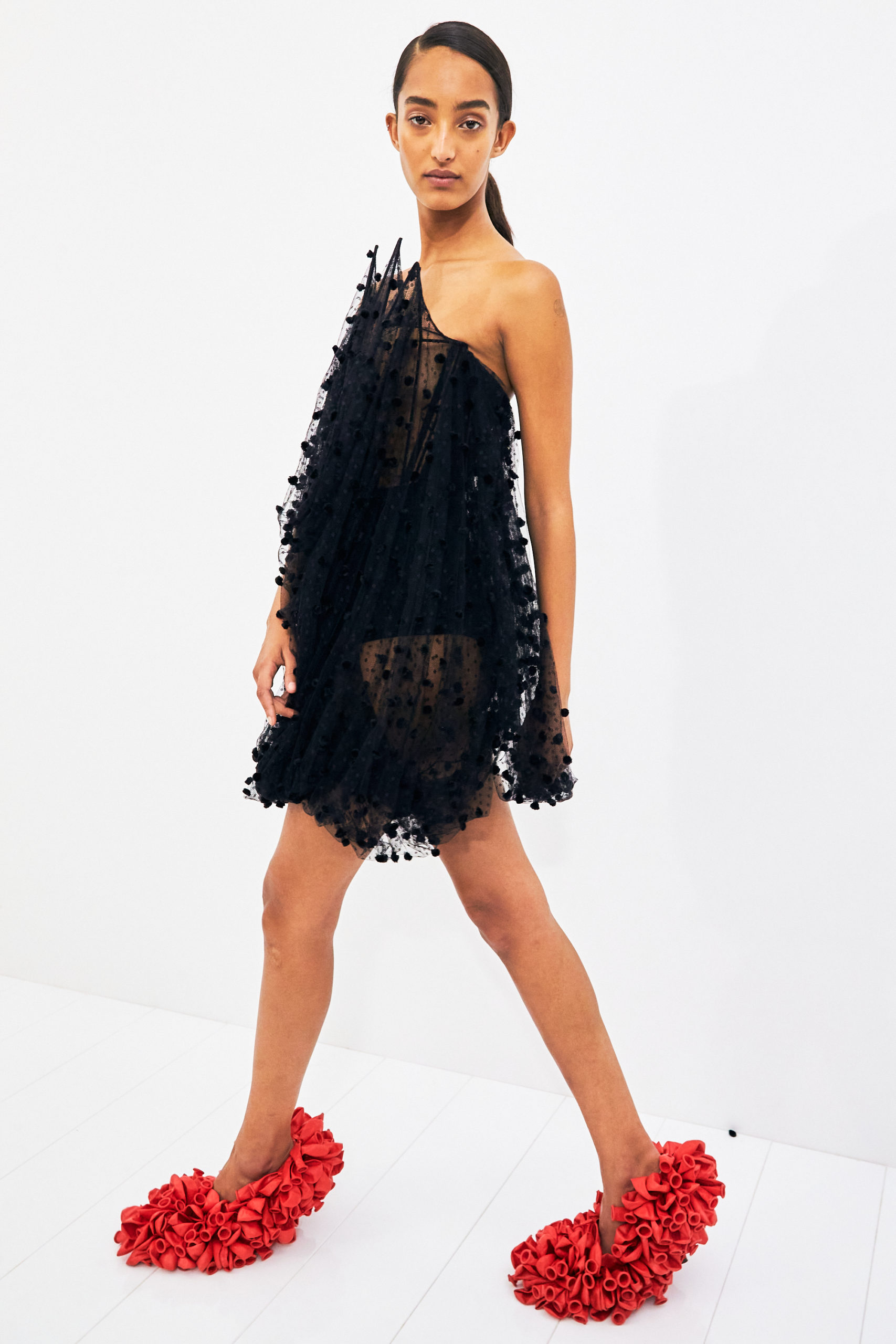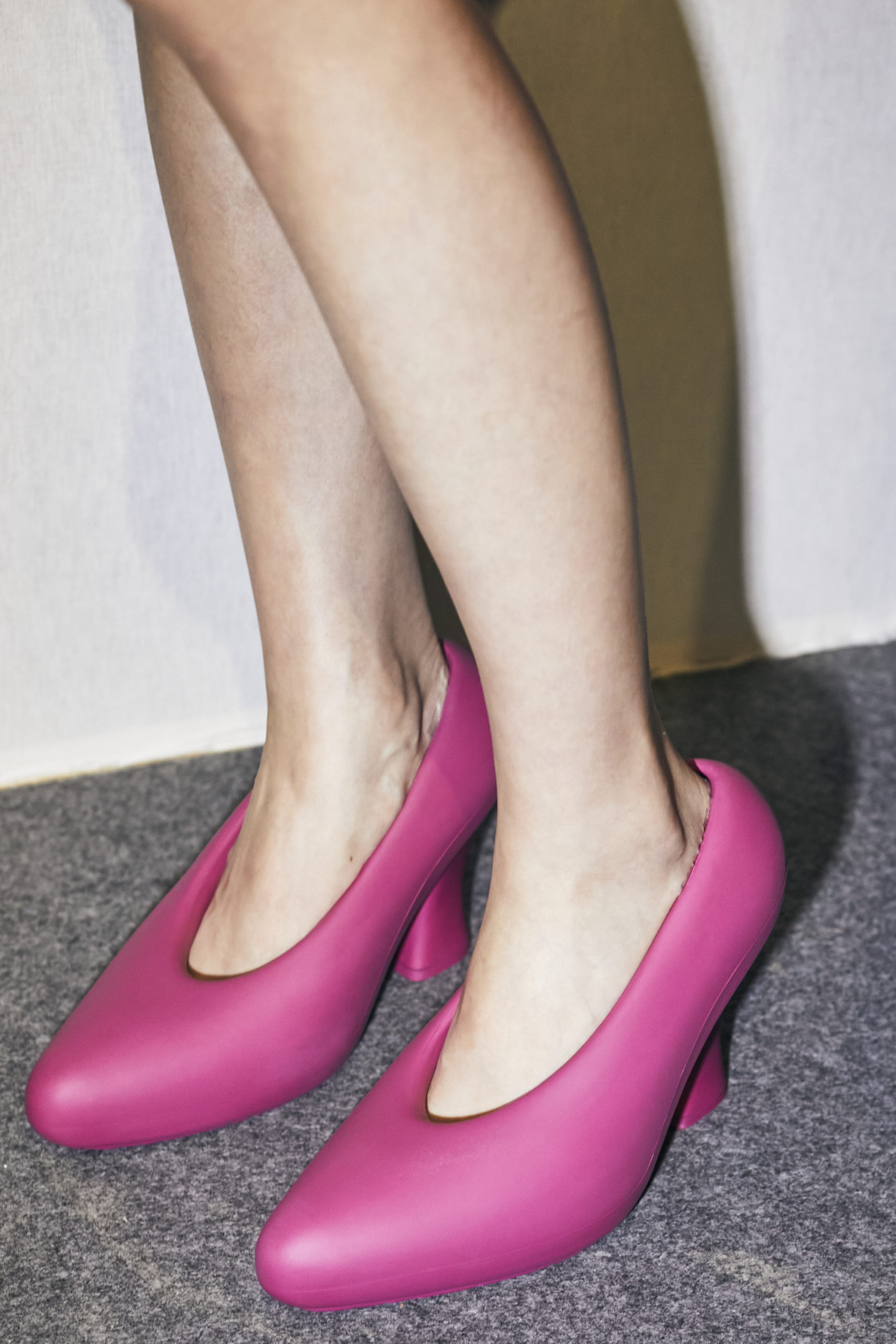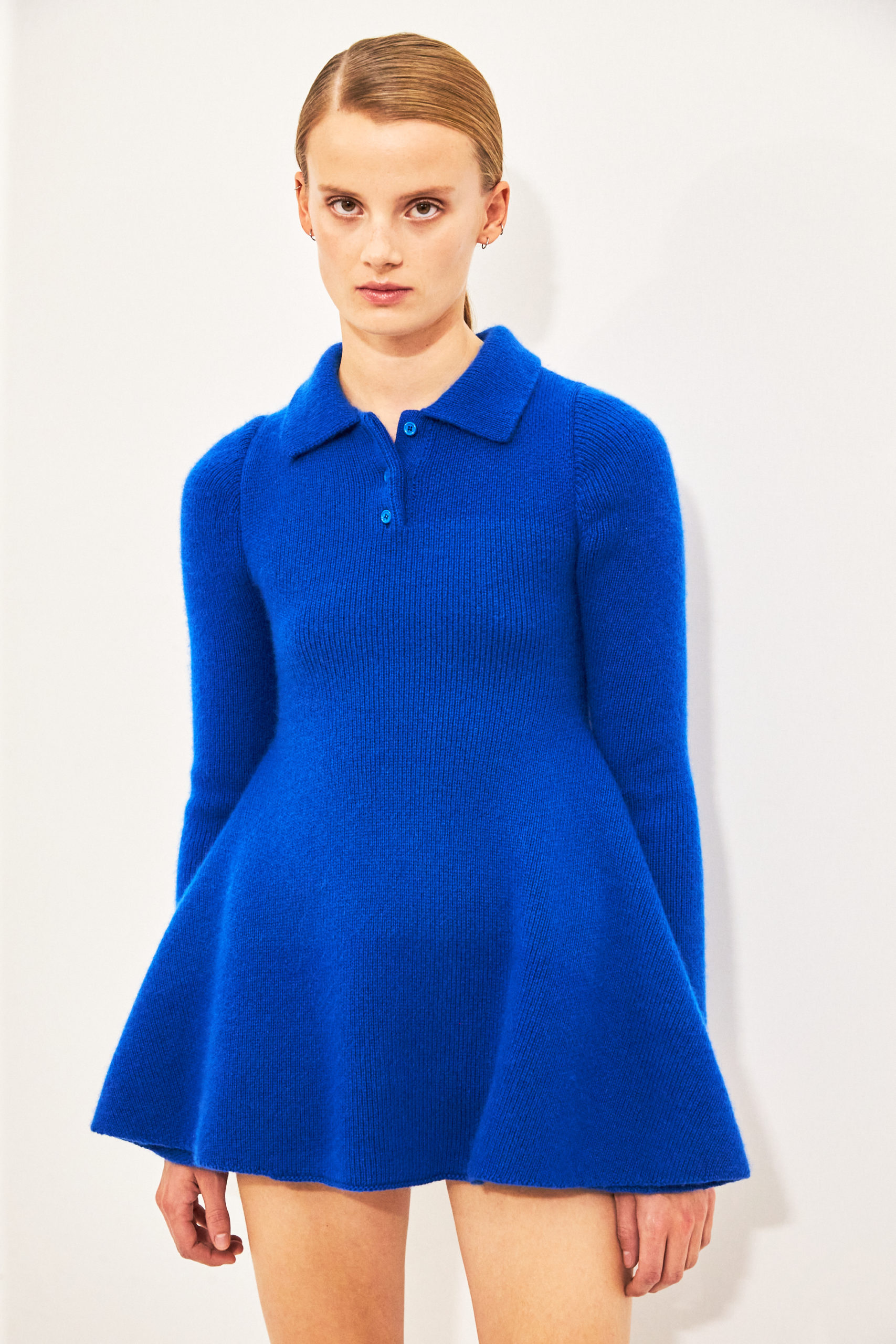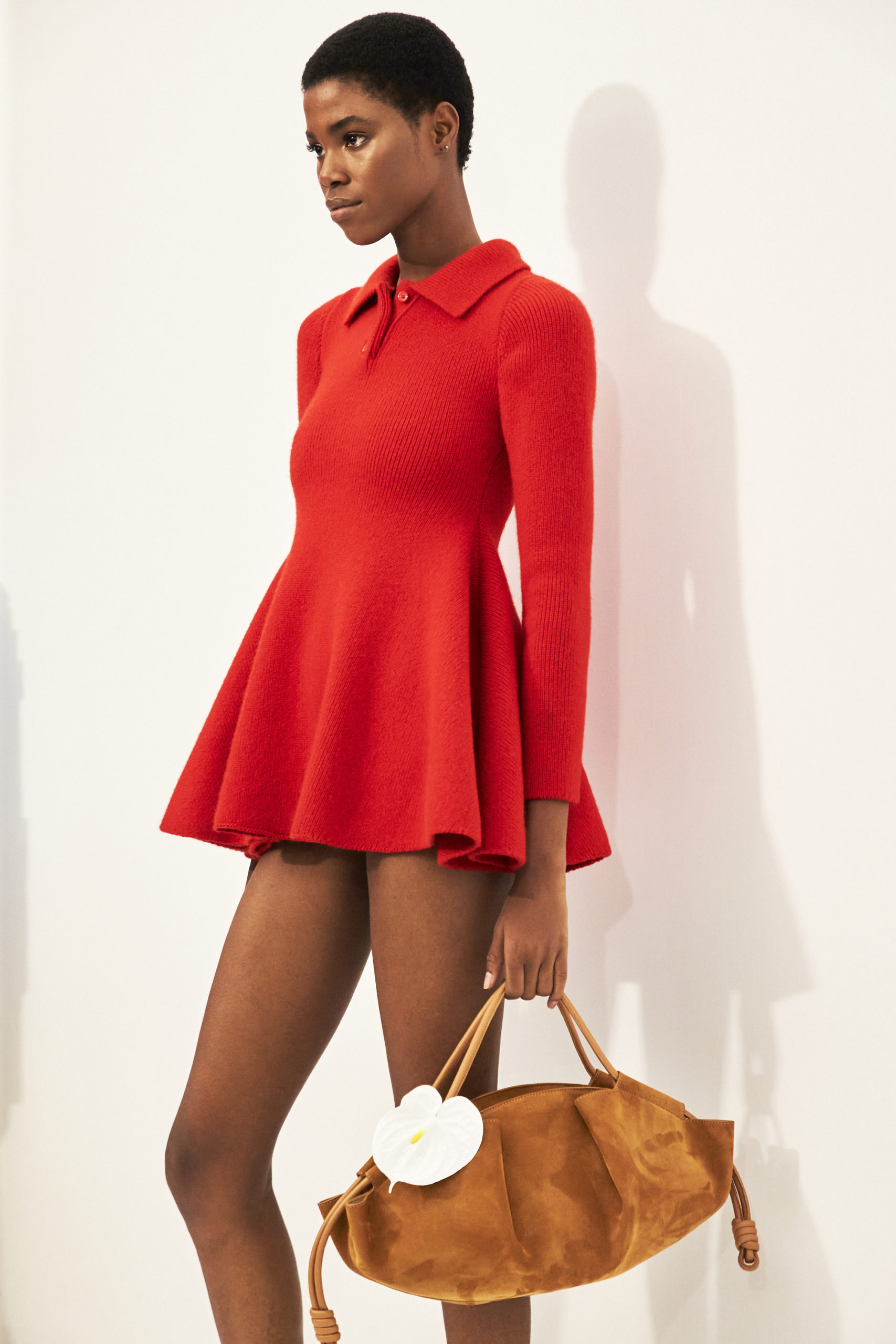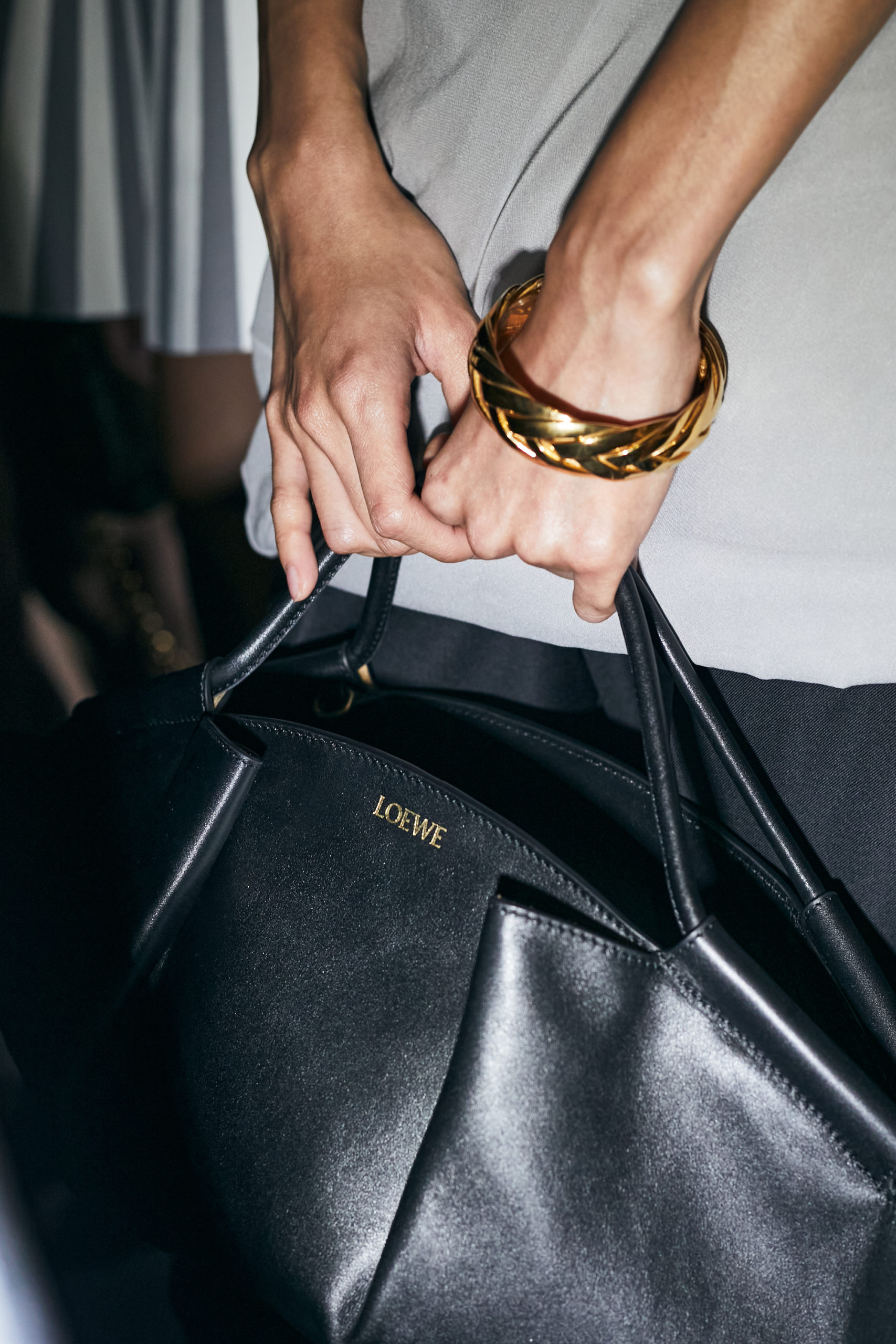With balloon heels and a surrealist 8-bit twist, Loewe’s Spring/Summer 2023 show deflected Narcissus’s gaze back to nature
Inside the Loewe Spring/Summer 2023 showspace, the floor was colorless, polished with a chaste sheen. The models ascended to the runway from a perfectly square bottomless pit, from which a colossal, Jack-and-the-Beanstalk-like anthurium, deified in fiberglass, emerged. It also was here, in the equestrian arena of Paris’s La Garde Républicaine, that Anderson showcased his game-changing Spring/Summer 2022 collection—the one with all those iridescent, breast-plated jersey dresses and egg-shell-heeled stilettos. That was an explosive collection, turning the head of every major fashion editor and inciting a myriad of Substack entries and Twitter threads from high-fashion Internet kids, who rarely sacrifice their carefully curated mystique for discourse. From inside this brightly-lit, orthogonal rink—something out of a Raphael fresco—Anderson has declared a new world order.
Attending Fashion Week can be a pretty empty experience. Often, it feels like you are desperately searching for beauty in a sea of vanity; rarely do you find what you are looking for (or what you’ve been promised). Every performance is short-lived, fading quickly from prominence. Narcissus’s tormented lack of awareness reflects in our black-mirrored phone screens, held up by showgoers like crested shields. This is not the case with Loewe. To contextualize the brand’s identity today, it is important to remember that many have described Anderson’s work as “ugly or deliberately difficult.” He was among the first to blast scallop-hem-frilly-skirt British androgyny on the catwalk; the models demanded a second look, and probably a third. But according to Anderson, he was never trying to be outwardly controversial—he’s just emotional, and quite compulsive about achieving his goals. “I think you need struggle,” he once said. “[If not,] you have nothing to fight for.”
In a self-diagnosed, neurotic, post-pandemic I’ve nothing to lose state of mind, Jonathan Anderson felt Narcissus’s pain, too. But unlike Narcissus, Anderson isn’t excessively proud of the beauty of his design. He doesn’t peer down at it, nor does he regard it as a static self-portrait. To him, fashion is a broad horizon that scatters at every sunray—or, in this peculiar case, a manifold of anthurium bouquets. When asked why anthuriums, Anderson said that they are real things that look fake. Loewe’s show notes, however, hint at the more subversive and sinister reasons why Anderson was drawn to them: The pimply flesh of the rigidly upright apadix is undeniably a phallic gesture. Moreover, harboring insoluble calcium oxalate crystals in their hooded leaves, these flowering plants are poisonous to the touch. Anderson has implemented his own sort of Freudian, surrealist, free association technique to apply the blooms to this collection: They’re molded into bodices and bra cups, anchored to the vamps of stilettos, and dangled from leather bags.
Historically known for its exceptionally high-quality leather goods, Loewe once counted members of the Spanish royal family as frequent customers. Since his appointment as creative director, Anderson has earnestly and tenderly grappled with the important tradition of heritage-based craftsmanship. To deal with the institution of the atelier in the 2010s, he burst the bubble of artisanal fashion—something the industry really needed at the time—to unite art and design in the context of craft. By championing craft—which stresses the passing down of technique through non-Western, familial contexts (a tradition that was not yet welcomed by the Chambre Syndicale)—Anderson showed that it was possible to apply his experimental affinities to the biggest fashion league possible.
After nearly a full decade at the helm of Loewe, Anderson’s provocation has changed course. He is no longer making crafty fashion, or clothing and accessories that double as craft-based sculptures. The dexterity of his craftsmanship has endured, but its specific genealogies are occulted in order to free the original inspiration from the restraints of logic and censure. This is the curious thing about the ontological dilemma of fashion: its simplicity. A collection could be largely dependent upon one singular flower motif; as this season’s show notes underline, this collection is defined by the syntax of “sharpening” and “stripping down” design elements. By abandoning the world of senses, Anderson is able to “amplify through the act of reduction,” and therefore enter into the empty space of pure understanding.
A pair of heels was gobbled up by a ludicrous assemblage of deflated balloons, yet a bare-boned version that trailed behind appeared to be buoyantly puffed up on their own; striped, short-sleeve mini dresses almost looked pleated, simulating a Moiré effect as they bouncing up and down its wearers’ hips; cloaking over invisible pyramidal structures, pieces of fabric loosely took shape as bodycon “dresses,” while defying the logic of gravitational drape; something like a bodice in the form of an enormous anthurium clung onto a model’s torso, almost swallowing her whole but leaving her back bare. On the bottom, she wore only knit high-cut briefs, embodying an airy romanticism that could only be matched by Venus’s birth.
A series of looks that really got people talking was Anderson’s 8-bit-looking sweaters and pants: one-dimensional “pixelated glitches,” as Anderson called them. In contemplating these design cues, perhaps it’s time for us to return to Narcissus’s problem: The Greek mythology that warned us of self-limitation has been forgotten by modern society, which tends to buy into the ideal of infinite progress. Anderson may have wanted to comment on the fact that all “originality” will soon fade into the ebb and flow of never-ending seasonal collections, eventually flattening out in the algorithm. He successfully materialized the veneer of fashion, making a deliciously consumable garment that will fade seamlessly into digital data, in a wondrous, non-depressing way. Pixelization doesn’t scare us. We wear QR codes on our sleeves. In fact, Anderson actually did just that: During the finale, he emerged from backstage wearing a Challengers sweater, promoting an upcoming movie that he will serve as costume designer for. Let fashion oscillate on the surface, and it will trap you in the perpetual rhythm of its blossoming glory.
Earlier this year, Rachel Tashjian wrote, “Whether you like what Jonathan Anderson is doing at Loewe or not, it’s probably the most important thing happening in luxury fashion.” The question that’s left is, how will he keep climbing higher? Well, as Anderson has very clearly discovered, a good performance is a fugitive pantomime. As long as you stay with the times, you will rise above the tide. The Gardens of Babylon have long clung to our heartstrings, and there will be another spring to come.



